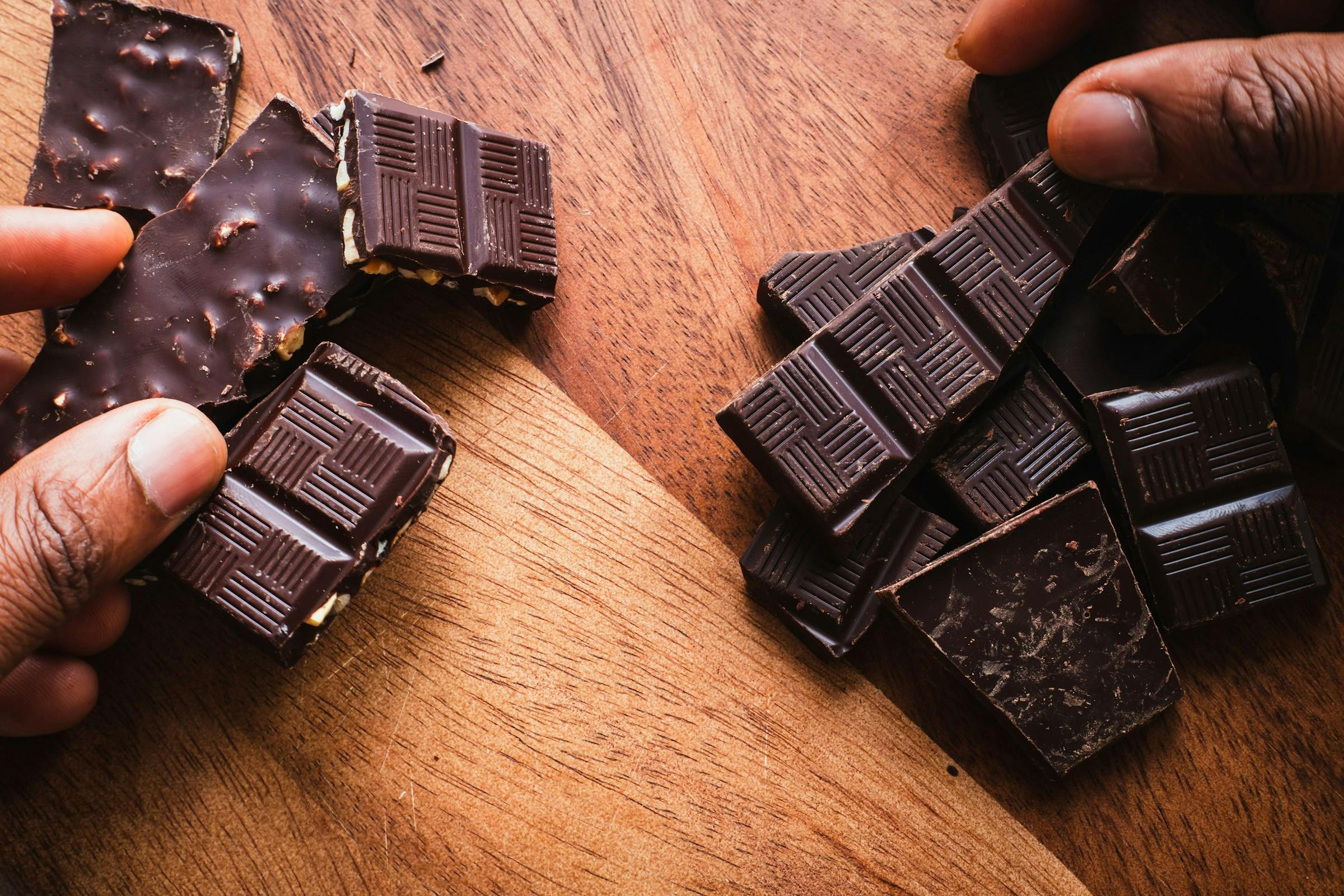What Foods Are High in NAD+? Best Diet to Boost Cellular Energy and Longevity
By Editorial Team
Reviewed by Dr. Daniel Uba, MD
Published Sep 2, 2025
8 min read

If you’ve ever wished you had more energy during the day or wondered how to slow down the effects of aging, chances are you’ve come across the term NAD+. This tiny molecule, which works behind the scenes in almost every cell in your body, has become a big topic in the world of health and longevity. People are asking an important question: what foods are high in NAD+?
The short answer is that you can’t eat NAD+ directly in the way you’d eat protein or carbohydrates. But you can eat foods that either contain NAD+ precursors (building blocks that your body turns into NAD+) or foods that help protect and preserve NAD+ levels. By making smart choices about what you put on your plate, you can naturally support your body’s energy, repair processes, and even healthy aging.
In this article, we’ll dive deep into what NAD+ is, why it matters for your health, how foods influence NAD+ levels, and the best dietary and lifestyle tips to maximize your body’s natural supply. By the end, you’ll not only understand which foods support NAD+, but also how to put them together into meals that work for your health and longevity goals.
What is NAD+ and Why Is It Important?
NAD+ stands for nicotinamide adenine dinucleotide, which might sound intimidating, but it’s simply a molecule that exists in every living cell. Think of it as your body’s spark plug. Without it, your cells can’t convert the food you eat into usable energy.
NAD+ is involved in two main jobs:
- Energy Production – Every time you eat carbohydrates, fats, or proteins, your body has to break those down into ATP, the energy currency of life. NAD+ helps shuttle electrons through your mitochondria, the power plants of your cells, so you can stay energized and alive.
- Repair and Protection – NAD+ is also needed for DNA repair, controlling inflammation, and turning on “longevity genes” called sirtuins. These processes are what help keep your body resilient, even as you get older.
The challenge is that NAD+ levels decline with age. By the time you’re middle-aged, you may have only about half the NAD+ you did in your youth. Lower NAD+ is linked to fatigue, slower metabolism, and a higher risk of age-related health issues. That’s why scientists, wellness experts, and everyday people are searching for ways to boost NAD+.
Can Food Really Boost NAD+ Levels?
Here’s the good news: while you can’t just eat NAD+ like a vitamin, your body is designed to make NAD+ from certain nutrients. These nutrients are called NAD+ precursors.
The main ones include:
- Niacin (Vitamin B3) – found in meats, fish, nuts, and grains.
- Tryptophan – an amino acid in protein-rich foods.
- Nicotinamide riboside (NR) and Nicotinamide mononucleotide (NMN) – found in smaller amounts in some vegetables and milk.
Your body takes these nutrients and runs them through natural biochemical pathways that ultimately produce NAD+.
But food does more than just supply the building blocks. Some foods help protect NAD+ by fighting oxidative stress, while others may help regulate enzymes that use up NAD+ too quickly. So, a good NAD+-supporting diet isn’t just about single ingredients—it’s about the overall quality and balance of what you eat.
Best Foods High in NAD+ Precursors
Now let’s look at specific foods and how they support NAD+ production in your body.
Niacin-Rich Foods
Niacin, also known as Vitamin B3, is one of the most direct precursors to NAD+. Your body can take niacin from food and convert it straight into NAD+. Foods rich in niacin include chicken, turkey, beef liver, tuna, salmon, peanuts, and whole grains.
For example, eating a serving of grilled chicken breast or a piece of salmon isn’t just fueling your muscles with protein—it’s also providing niacin that your body will turn into NAD+. Historically, niacin has been used as a supplement for heart and cholesterol health, but in the context of NAD+, it’s simply one of the most efficient nutrients for maintaining your energy metabolism.
Tryptophan-Rich Foods
Tryptophan is an essential amino acid, which means your body can’t make it and you need to get it from food. Once digested, tryptophan follows a pathway called the kynurenine pathway, which eventually leads to NAD+ production.

This is why foods like turkey, chicken, eggs, dairy, soy products, nuts, and seeds are valuable for NAD+. A bowl of Greek yogurt with nuts, for example, is not only satisfying but also supplying tryptophan that your body can use to keep NAD+ levels steady.
NMN and NR-Containing Foods
In recent years, NMN (nicotinamide mononucleotide) and NR (nicotinamide riboside) have gained attention as supplements, but they also exist in small amounts in food.
Vegetables like broccoli, cabbage, cucumber, and edamame contain NMN. Grapes and avocados are other good sources. Cow’s milk has been shown to contain NR. While the amounts from food are relatively small compared to supplements, these foods still contribute to the pool of NAD+ precursors in your body.
So, if you’re adding avocado to your salad or enjoying a side of sautéed broccoli, you’re not just getting vitamins and fiber—you’re also supporting your NAD+ supply.
Antioxidant-Rich Foods that Protect NAD+
Another important strategy is to reduce NAD+ depletion. Oxidative stress and inflammation consume NAD+, leaving less available for energy and repair. Foods rich in antioxidants help fight this process.
Green tea, berries, dark chocolate, and leafy greens are great examples. They don’t necessarily provide NAD+ precursors, but they help protect the NAD+ you already have. Think of it as guarding your savings account so you don’t spend more than necessary.
Fermented Foods
Your gut plays a role in many aspects of metabolism, including how your body uses NAD+. Fermented foods like yogurt, kefir, sauerkraut, and kimchi provide beneficial probiotics that support a healthy microbiome. A balanced gut environment may help optimize how nutrients are absorbed and processed into NAD+.
Lifestyle and Dietary Tips to Maximize NAD+ from Food
It’s not just about individual foods—it’s also about how you combine them and live your life. Here are a few key strategies:
Eating a balanced diet that includes NAD+ precursors from both plant and animal sources is ideal. Pairing antioxidant-rich vegetables with niacin-rich proteins in the same meal can maximize the effect. For example, salmon with a side of spinach and berries makes a powerful NAD+-friendly dinner.
Intermittent fasting and mild caloric restriction have also been shown to help preserve NAD+. When your body isn’t constantly processing food, it uses energy more efficiently and activates pathways that increase NAD+ availability.
On the flip side, it’s smart to avoid habits that drain NAD+, such as heavy alcohol consumption, excess processed sugar, and chronic overeating. These can all accelerate NAD+ depletion.
Foods vs. Supplements: Do You Need Both?
This naturally raises the question: is food alone enough, or do you need supplements?
For most people, a nutrient-rich diet that includes niacin, tryptophan, NMN/NR foods, and antioxidants is a strong foundation for supporting NAD+. Supplements can provide an extra boost, especially for people concerned about aging, energy, or chronic health conditions.
NMN and NR supplements, for instance, can deliver higher doses than you’d ever get from food. NAD+ IV therapy is another option, though it’s expensive and not practical for everyday use.
The best approach depends on your personal goals and health status. For many, food-first is the smartest strategy, with supplements used as optional support.
Sample 1-Day NAD+-Boosting Meal Plan
To make this more practical, let’s put it all together into a simple one-day plan.
- Breakfast: Greek yogurt topped with walnuts, chia seeds, and blueberries.
- Lunch: Grilled chicken salad with avocado, spinach, cucumber, and olive oil.
- Snack: A square of dark chocolate with a cup of green tea.
- Dinner: Salmon with steamed broccoli, quinoa, and a side of sauerkraut.
This menu naturally combines niacin, tryptophan, NMN/NR, antioxidants, and probiotics—all while being delicious and easy to prepare.
FAQs
1. Can you get NAD+ directly from food?
No, NAD+ itself is not something you can eat. Instead, you get nutrients from food that your body converts into NAD+.
2. What fruit is highest in NAD+ precursors?
Avocados and grapes are among the best, as they contain NMN and NR.
3. Are there vegetarian or vegan NAD+ food sources?
Yes. Soy, edamame, mushrooms, nuts, seeds, broccoli, avocado, and whole grains provide NAD+ precursors. Fermented foods like sauerkraut and kimchi also help.
4. How long does it take for NAD+ levels to increase from diet?
It varies, but consistent intake of NAD+ foods supports steady levels over weeks to months. Lifestyle factors like sleep, exercise, and fasting also play a role.
5. Do NAD+ foods really slow aging?
They support processes linked to healthy aging, like DNA repair and energy metabolism. While they’re not a magic bullet, they contribute to longevity when combined with overall healthy living.
Key Takeaways
NAD+ is one of the most important molecules in your body, fueling energy and protecting your cells. Levels naturally decline with age, but food can play a powerful role in maintaining and boosting NAD+.
By eating niacin-rich proteins, tryptophan sources, vegetables with NMN and NR, antioxidant-rich fruits and teas, and fermented foods, you can naturally support NAD+. Pair these with smart lifestyle habits like intermittent fasting and minimizing processed foods, and you’ll give your body the best chance to stay energized and resilient as you age.
Food might not be the only way to boost NAD+, but it is the safest, most natural, and most sustainable. And it all starts with the choices you make at your next meal.
Share this article

What Is Premature Aging and What Can You Do to Prevent or Reverse It?
Dr. Priyali Singh, MD
Sep 28, 202510 min read

Low Sodium Diet: Simple Guidelines, Food Lists, and Tips for Better Health
Lilian E.
Sep 30, 202512 min read

Tips for Staying Healthy: 12 Simple Habits for Energy, Longevity, and Better Living
Editorial Team
Sep 30, 202510 min read

Best-in-class care is a click away
Find everything and everyone you need to reach your metabolic health goals, in one place. It all makes sense with Meto.
Join Meto